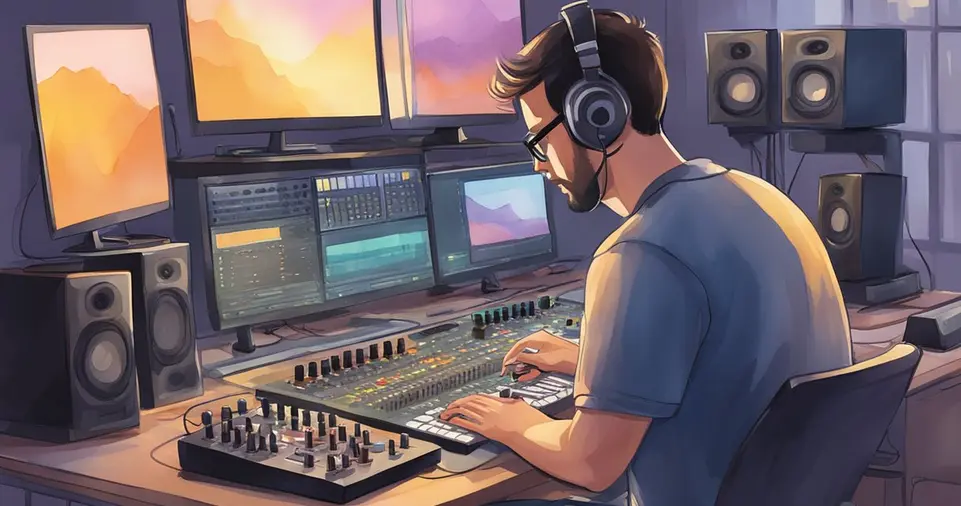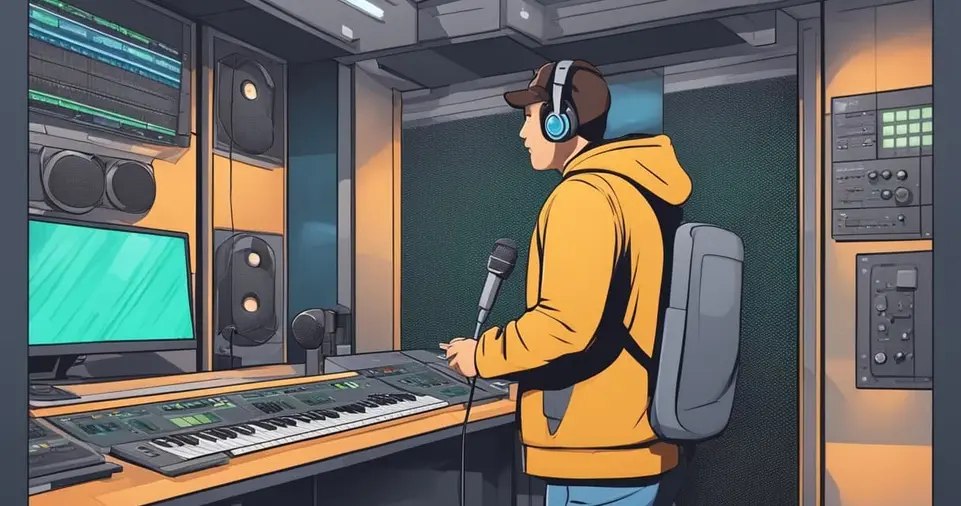Animation is a unique medium that combines visual art, storytelling, and technology to create captivating worlds.
While stunning visuals are essential to animation, they are only one part of the equation.
The sound—the music, voiceovers, and sound effects—plays a pivotal role in enhancing the storytelling experience and deepening the emotional impact of animated films and series.
Without sound, animated worlds would feel flat and disconnected, lacking the emotional depth and engagement that make these stories so memorable.
Music and sound effects serve not only as embellishments but as integral elements that bring animation to life.
They shape the atmosphere, define characters, and even signal shifts in tone.
A well-designed soundscape can elevate an animation from merely visually appealing to a powerful, multi-sensory experience.
Through the use of music and sound, animators can guide the audience’s emotions, providing cues that help to intensify a story’s humor, drama, or suspense.
In this article, we’ll explore why sound is so critical in animation, examining how music and sound effects contribute to different aspects of storytelling, character development, mood setting, and more.
The Power of Music in Animation
Setting the Tone with Music
Music is a cornerstone of animated storytelling. Its ability to set the mood of a scene is unparalleled.
When a scene begins, music often provides immediate cues to the audience, letting them know what to expect emotionally.
Whether it’s the grand orchestral sweep in the opening of The Lion King or the upbeat, adventurous theme of Toy Story, the music immediately frames the emotional context of a scene.
The right piece of music can transport the viewer into the world of the animation, amplifying its themes and atmosphere.
A well-known example is Frozen, where the song “Let It Go” became an anthem that perfectly encapsulated the character Elsa’s journey toward self-empowerment.
This musical moment not only serves as a highlight but also helps define the character’s transformation.
On the flip side, slower, more contemplative music often accompanies reflective or sorrowful moments, such as in the beginning sequence of Up, where the emotional power of the music deepens the sadness of the storyline.
Thus, music functions as an essential tool for animators, offering them a way to influence the emotional journey of the audience.
Creating Immersion and World-Building with Music
In animated films, music helps immerse the audience into the world being created on screen.
For example, the use of indigenous music in Moana immerses the viewer in the culture and setting of the Pacific Islands.
The use of traditional instruments and native sounds establishes the film’s setting and evokes the essence of the environment, making the audience feel as though they are traveling alongside the character.
Music also has the power to transcend cultural and language barriers, providing a universal emotional language that resonates with audiences worldwide.
A well-composed soundtrack can shape an entire genre, such as the sweeping, orchestral scores often found in fantasy and adventure animated films like The Lord of the Rings or The Chronicles of Narnia.
By using music that aligns with the themes of the world, animators can effectively communicate the emotional tone of each location, from bustling cityscapes to quiet forests.
In this way, music doesn’t just complement the animation; it becomes a key player in making the world feel alive and real.
ALSO READ: How Long Does It Take to Make an Animation? A Beginner’s Guide to Production Time
The Importance of Sound Effects in Animation

Defining Actions and Enhancing Realism
While music serves as a broad emotional cue, sound effects help ground the animation in reality.
Whether it’s the sound of footsteps on gravel or the clang of metal against metal, these small auditory details add depth and authenticity to the world.
Sound effects play a significant role in defining a character’s movements and actions.
For example, in Tom and Jerry, the exaggerated sound effects of a slap, punch, or chase sequence elevate the humor, making the animation feel more dynamic and entertaining.
A character’s actions, whether dramatic or humorous, are made more impactful when paired with sound effects.
The iconic “boing” when a character jumps or the “swoosh” when they zoom across the screen are sound elements that work in tandem with the visuals to create a cohesive experience.
Sound effects also help establish the environment. In a futuristic animation like WALL-E, the hum of the machines and the beeping of the robot characters establish the setting’s technological nature.
These small details, often overlooked, are crucial in building the realism of the world and making it feel complete.
Enhancing Comedy with Sound Effects
Comedy is one of the areas in animation where sound effects truly shine.
Animated humor often relies on exaggerated movements and actions, and sound effects are crucial in making these moments memorable.
In classic animated comedies like Looney Tunes, the sound effects are just as iconic as the characters themselves.
The “splat” of a pie in the face or the hilarious “boing” when a character is flung into the air are essential elements that make the animation funnier.
These sounds serve as punctuation marks for visual gags, heightening the absurdity and helping the audience connect emotionally to the humor.
The exaggerated sounds are often what make the action more engaging, signaling to the audience that the cartoonish world they’re watching follows a different set of rules, where physical comedy is amplified through sound.
Sound effects also help define a character’s personality.
For example, a slow, exaggerated sound effect may highlight a character’s clumsiness, while a quick, sharp sound may emphasize their sudden actions.
Through these details, sound effects not only contribute to the animation’s comedy but also enhance the characters’ development.
The Role of Voice Acting and Dialogue
Giving Life to Characters
While music and sound effects are crucial, the voices of characters are perhaps the most integral component of sound in animation.
Voice acting provides personalities, emotions, and intentions to animated characters.
A character’s voice can tell the audience as much about their personality as their actions or appearance.
In animated films like Shrek, the voice acting of characters like Donkey and Shrek adds layers to their personalities, allowing the audience to connect with them more deeply.
The voice acting also enhances the humor, drama, or suspense of a scene.
A dramatic monologue, delivered by an animated character with a powerful voice, can create a lasting emotional impact.
Similarly, in comedic scenes, the timing and delivery of the voice can elevate the humor, creating memorable moments.
In many cases, the voices are complemented by sound effects that enhance the character’s actions.
For instance, the exaggerated sound of a character’s footsteps or their screams can accentuate the performance of the voice actor, bringing the character’s emotions to life.
Dialogue and Its Role in Storytelling
In addition to the characters’ voices, the dialogue itself plays a critical role in animation.
Dialogue can carry much of the plot and themes, revealing crucial details about the story.
In animated films like Zootopia, dialogue is key to the world-building process, as it introduces the audience to different characters, cultures, and themes.
In some animations, especially those aimed at children, dialogue can also serve an educational purpose.
It conveys messages, moral lessons, or humor that resonates with young audiences.
Effective dialogue can bridge the gap between the animation’s fantastical elements and the real-world themes it seeks to address, making the story more relatable and engaging.
How Sound Affects the Emotional Impact of Animation

Building Emotional Connections
Sound has an incredible power to affect the emotions of the audience. Music, in particular, is a key driver of emotional engagement.
Through melodies and harmonies, music can evoke a wide range of feelings—from joy to sorrow, fear to excitement.
The use of music to heighten emotional moments is one of the most effective techniques in animated storytelling.
In Up, for example, the poignant score during the opening sequence, which chronicles Carl and Ellie’s life together, conveys a sense of loss and nostalgia without a single word of dialogue.
The music becomes the emotional undercurrent of the scene, amplifying the sense of bitter sweetness.
Similarly, in Toy Story 3, the emotional farewell scene between Woody and the other toys is made even more heart-wrenching by the accompanying music.
Sound effects further enhance these emotional moments by adding layers of auditory cues.
The soft rustling of leaves in a tender scene or the loud, sudden crash during an intense moment can make the difference between a good scene and a great one.
By combining music, sound effects, and voice acting, animators create a multi-layered emotional experience that resonates deeply with the audience.
Amplifying Tension and Suspense
Animation often uses sound to ramp up tension and suspense.
In action-packed moments, sound effects such as heavy breathing, the screeching of tires, or the crashing of objects help to build anticipation.
The sound of rapid footsteps or a racing heartbeat can mirror the fast-paced action, creating a sense of urgency and heightening the stakes.
In horror-themed animation, sound becomes even more essential in creating a chilling atmosphere.
The eerie, low hum of the soundtrack or a sudden, sharp sound can make even the most unexpected moments feel terrifying.
Animation allows for creative manipulation of sound to add layers of fear and suspense, making the audience feel on edge even in a fantastical, animated world.
ALSO READ: The Basics of Animated Character Design: Bringing Your Ideas to Life
Conclusion
Sound is a powerful tool in animation that goes far beyond merely supporting the visuals.
It is integral to the storytelling process, enhancing every aspect of the film, from character development to world-building, emotional resonance, and audience engagement.
Music, sound effects, and voice acting all work together to create a rich, immersive experience that elevates the narrative and makes animated films unforgettable.
The next time you watch an animated film, pay close attention to the sound—because, as we’ve seen, it plays an essential role in bringing the story to life.

